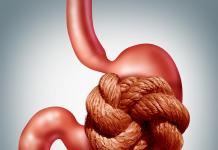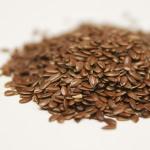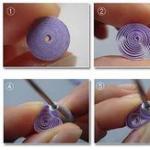Child and care for him. From birth to 3 years Sokolov Andrey LvovichFrom the book First Lessons of Natural Education, or Childhood without Illness author Nikitin Boris Pavlovich From the book From zero to primer author Anikeeva Larisa Shikovna
Functional dyspepsia Young children often experience functional digestive disorders associated with insufficient gastric juice and accelerated gastric emptying. Most often, functional dyspepsia is based on
From the book Neuropsychological diagnostics and correction in childhood author Semenovich Anna Vladimirovna§ 1. Functional immaturity of the frontal parts of the brain Already during a conversation with parents, it becomes clear that the child is easily distracted, cannot concentrate, quickly gets tired of activities, and is difficult to interest him in anything for a long time. He is lethargic and indifferent to almost everything,
From the author's book§ 2. Functional immaturity of the left temporal region A distinctive feature of the syndrome of immaturity of the temporal structure of the left hemisphere is isolated difficulties in sound discrimination and, as a consequence, understanding speech perceived by ear. Rest
From the author's book§ 3. Functional immaturity of interhemispheric interactions at the transcortical level (corpus callosum) This syndrome is distinguished by a characteristic set of typical signs of “functional autonomy” of the cerebral hemispheres in childhood: immaturity
From the author's book§ 4. Functional immaturity of the right hemisphere First of all, with the functional immaturity of the right hemisphere, insufficiency of spatial representations (metric, structural-topological, coordinate) and disorders
From the author's book§ 5. Functional deficiency of the subcortical formations (basal ganglia) of the brain Among the complaints of parents of children with insufficiency of the subcortical formations, the epithets “lazy”, “inattentive”, “uncontrollable”, etc. are the first to appear. Children of this group are different
From the author's book§ 6. Functional deficiency of brain stem formations Dysgenetic syndrome These children are characterized by the accumulation of dysembryogenetic stigmas: facial asymmetries, asymmetries of the palpebral fissures, abnormal growth of teeth, various types of dystonia, including:
– a clinical syndrome that occurs against the background of morphofunctional immaturity of the digestive tract and its neuroendocrine regulation in the first months of a child’s life and occurs with paroxysmal pain in the intestines. Intestinal colic is accompanied by crying and screaming of the newborn, restlessness, tension and bloating. The diagnosis of intestinal colic in newborns is based on the characteristic clinical picture, data from coprological examination, stool culture, and ultrasound of the abdominal organs. Treatment of intestinal colic in newborns includes the mother's diet, adherence to feeding techniques, selection of an adequate formula, light abdominal massage, taking herbal remedies, antispasmodics, probiotics.

General information
Intestinal colic in newborns is a condition associated with age-related functional disorders of the digestive tract in infants and accompanied by paroxysmal abdominal pain. Children in the first six months of life often experience various functional gastrointestinal disorders: regurgitation, intestinal colic, functional diarrhea and constipation. Intestinal colic, according to the results of various studies, occurs in 20 - 70% of newborns.
The greatest severity and frequency of intestinal colic is observed in children aged 1.5 to 3 months. Intestinal colic is more common in boys and first-born children. Intestinal colic can disrupt the feeding and sleeping patterns of a newborn and cause emotional stress and nervousness for young parents. Pediatrics, pediatric gastroenterology, and neurology are involved in a comprehensive solution to the problem of intestinal colic in newborns and children in the first months of life.

Causes of intestinal colic in newborns
The mechanism of development of intestinal colic in newborns is due to impaired motor function of the digestive tract and increased gas formation in the intestines, causing sharp local spasms and distension of the intestinal wall. The main etiological factors of intestinal colic in newborns can be associated directly with the child himself or with his mother.
On the part of a newborn, the appearance of intestinal colic can be promoted by morphofunctional immaturity of the digestive tract, a violation of the neuroendocrine regulation of its function; reduced enzymatic activity of the gastrointestinal tract, lack of hydrochloric acid, lactase deficiency, disturbances of intestinal microbiocenosis.
Intestinal colic in newborns is caused by the anatomical features of the intestinal structure and the maturation of the nervous system, which continues until 12-18 months of age and may be accompanied by vegetative-visceral disorders. If the baby's feeding technique is violated, sucking on an empty nipple or breast with a small amount of milk, as well as in premature infants, excessive swallowing of air (aerophagia) is observed, leading to the appearance of intestinal colic in newborns. Age-related and individual immaturity of enzymatic systems and intestinal dysbiosis in newborns cause incomplete breakdown of fats and carbohydrates, contributing to increased gas formation and expansion of the intestinal lumen.
The development of intestinal colic in newborns may be associated with a deficiency of certain hormone-like substances (gastrin, secretin, cholecystokinin, motilin) that regulate the motor and secretory functions of the gastrointestinal tract. The cause of intestinal colic in a newborn may be hypoxia and asphyxia suffered during the prenatal period or during childbirth. It has been established that the lower the gestational age and body weight of the newborn (i.e., the greater the degree of prematurity), the higher the risk of developing intestinal colic. In premature newborns, intestinal colic is usually more pronounced and more protracted.
Allergic reactions (gastrointestinal form of food allergy during the transition from natural to artificial feeding, the presence of food additives in mixtures, etc.) can also cause intestinal colic in newborns. Rarely, intestinal colic in newborns can be caused by congenital developmental anomalies (cleft lip, cleft palate, tracheoesophageal fistula).
Maternal factors that provoke the development of intestinal colic in newborns include a burdened obstetric and gynecological history (preeclampsia), inverted nipples, bad habits and nutritional errors of the nursing mother (excess cow's milk, very fatty foods, foods that increase flatulence), violation of feeding technique (overfeeding , improper dilution of mixtures); emotional instability and stress in the family.
Symptoms of colic in newborns
Intestinal colic in newborns occurs in the first 3-4 weeks of life and continues until 3, less often - 4-6 months of age. Attacks of intestinal colic in newborns usually begin unexpectedly, without any apparent reason, usually at the same time of day, immediately during or after feeding.
Episodes of intestinal colic last up to 3 or more hours a day, repeat at least three days a week and last for at least three weeks in a row. Intestinal colic in newborns is accompanied by a loud, piercing cry, a cry, expressed by the anxiety of the child, who twists his legs and pulls them to his stomach. In this case, there is hyperemia of the facial skin, bloating and tension in the anterior abdominal wall. One attack of intestinal colic can last from 30 minutes to 3 hours.
With intense intestinal colic, newborns experience disturbances in appetite and digestion, rumbling in the stomach, regurgitation, increased irritability and excitability, and sleep disturbances. Relief from intestinal colic in a newborn occurs after the passage of gas or defecation. The general condition of the newborn between attacks of intestinal colic is not disturbed, there is no pain on palpation of the abdomen, good appetite remains, and weight gain is age-appropriate. Intestinal colic in newborns can be combined with constipation, dyspepsia, gastroesophageal reflux.
Diagnosis in newborns
The diagnosis of intestinal colic in a newborn is established on the basis of characteristic clinical symptoms and the results of a comprehensive examination, including a general blood and urine test, stool tests: (coprogram, determination of carbohydrate content and fecal calprotectin level), stool culture for intestinal group and dysbiosis, ultrasound of the abdominal organs cavities.
The calprotectin level makes it possible to differentiate functional disorders of the gastrointestinal tract from chronic inflammatory diseases - Crohn's disease and ulcerative colitis. In newborn children, the level of calprotectin in feces is higher than in older children (up to 1 year, the level of PKP is >500 mcg/g; up to 4 years -<100 мкг/г).
If, against the background of intestinal colic, there is fever, vomiting, blood in the stool, refusal to eat and stool retention, an additional more in-depth examination of the newborn and consultation with a pediatric surgeon is necessary.
It is advisable to carry out a differential diagnosis of intestinal colic in newborns with surgical pathology (acute intestinal obstruction), gastrointestinal form of food allergy, lactase deficiency, dysbacteriosis, acute intestinal infections, perinatal damage to the central and autonomic nervous system.
Treatment of intestinal colic in newborns
Treatment is carried out jointly by a pediatrician and a pediatric gastroenterologist, is individual in nature and is aimed at eliminating the main cause of this condition, correcting motor and functional disorders of the gastrointestinal tract.
Some cases of intestinal colic in breastfed newborns can be prevented by following the diet of the nursing mother. Products containing cow's milk protein and beef meat are excluded from her diet; foods rich in fats and also promoting increased gas formation (raw and pickled vegetables and fruits, legumes; fresh yeast bread and kvass), chocolate, sweets and baked goods are limited.
Before each feeding, it is necessary to place the baby on his stomach for 5-10 minutes, and then lightly stroke the abdomen in a clockwise direction to improve intestinal motility and the passage of gases. For intestinal colic, you can warm the newborn's belly with a warm diaper or carry him in your arms, pressing the anterior abdominal wall to the mother's stomach.
To prevent aerophagia, it is important to follow the feeding technique, keep the child in an upright position for 10–15 minutes after feeding for better burping of air; limiting pacifier sucking and selecting an adequate formula. If a gastrointestinal form of food allergy is suspected in a child, they switch to mixtures based on protein hydrolyzate (casein or whey); in case of lactase deficiency, they switch to low-lactose or lactose-free mixtures. Frequent use of a gas tube and enemas is not advisable due to the slight vulnerability of the intestinal mucosa in newborns, especially premature ones.
For severe intestinal colic, newborns are prescribed herbal remedies with carminative and relaxing effects (based on fennel, dill, chamomile, mint), defoamers based on simethicone, antispasmodics (drotaverine, suppositories with papaverine), and sorbents. Medicines are used both during an attack of intestinal colic and to prevent their development in newborns at each feeding. Probiotics are used to correct dysbiosis.
Prognosis of intestinal colic in newborns
The prognosis for intestinal colic in newborns is favorable; in most cases, they disappear after the 3rd month of the child’s life, in rare cases - after the 4th-6th month.
Young parents should be patient and remain emotionally calm. Compliance with the pediatrician’s recommendations, primarily the feeding regimen and technique, can alleviate the condition of newborns with intestinal colic.
Dysbacteriosis today is one of the most common disorders of intestinal functioning, which is typical for all age groups. Knowing the main signs of dysbiosis in a small child, you can quickly begin treatment and prevent unnecessary suffering for the baby. This article will help you with this.
Causes
The development of dysbiosis is possible due to many factors, since this condition develops as a result of a violation of the intestinal microflora. In children, unlike adults, this condition occurs quite often.
In the human intestine there is a certain set of microorganisms, which is the norm. Of course, minor fluctuations in the microflora in the intestines do not lead to illness. But sometimes, in some situations, their imbalance occurs, which is the cause of the appearance of the first symptoms of intestinal dysfunction. Dysbacteriosis is especially common in children of one month of age, as well as children under one year of age.
The reasons that contribute to the development of dysbiosis depend on how old the person is.
Let's look at the main reasons that can lead to dysbiosis in a child. Children under one year of age are more susceptible here. This situation can be explained very simply. A child under one year of age exhibits immaturity of the gastrointestinal tract. It is the immaturity of motor function in newborns that is the cause of frequent dysbiosis. Although after children reach one year, insufficient bowel function is possible for another couple of years, which is the main cause of dysbiosis.

In addition to immaturity of the gastrointestinal tract, the following reasons can lead to an imbalance of intestinal microflora in newborns and young children:
- premature birth;
- artificial feeding from birth;
- early transfer of the baby to artificial feeding with milk formulas;
- late latching of the baby to the breast during breastfeeding;
- malnutrition of the baby.
These reasons can be called primary, since they cause an imbalance in the intestines in newborns.
In addition, there is, so to speak, secondary dysbiosis, which is only a consequence of certain conditions. The following factors can lead to secondary disruption of intestinal microflora:
- presence of disturbances in intestinal motility. This may include constipation or diarrhea;
- the child has diseases that lead to impaired absorption in the intestines;
- various chronic diseases of the intestines and stomach. Such diseases include ulcers, gastroduodenitis, ulcerative nonspecific colitis, etc.;
- the baby has certain allergic diseases - atopic dermatitis, food allergies, etc.;
- the presence of acute infectious diseases in the body - influenza, various intestinal infections, respiratory and viral, pustular, etc.;
- carrying out various surgical interventions;
- the effect of radiation on a child’s body. Moreover, the impact can be very minimal;
- taking medications, especially antibiotics.

In children under one year old, the following reasons can provoke this condition:
- the presence of certain maternal health disorders during the perinatal period of intrauterine development of the fetus;
- prolonged stay of mother and child in the maternity hospital;
- various birth pathologies;
- dyspeptic disorders in the gastrointestinal tract - regurgitation, vomiting, intestinal dysfunction;
- the presence of a state of primary immunodeficiency;
- various kinds of pathological phenomena. For example, this group includes malnutrition, anemia, rickets and others;
- taking anti-inflammatory and hormonal drugs;
- constant presence of a newborn in unfavorable and stressful social conditions. Being in such conditions leads to a change in the psychoneurological status of the child, which negatively affects the functioning of his intestines;
- frequent colds;
- child inhalation of tobacco smoke (passive smoking);
- irrational and unhealthy diet. This factor is especially important when diagnosing microflora disorders in children of several years of age.
Regardless of how old the child is, the presence of helminthic infestation can lead to dysbiosis. In addition, it has recently become known that in children of different ages (especially under three years of age), the intestinal microflora can be disrupted by the herpes virus, chlamydia psitazzi, cytomegalovirus, and helicobacteriosis.

As we can see, the main reasons for the development of dysbiosis in children, regardless of how old they are, are the imperfection of the body’s defense mechanisms, the immaturity of the digestive system, as well as the influence of unfavorable environmental factors.
Based on the latter factors, doctors identify certain risk groups that are prone to this type of ailment. Let's look at them in more detail.
For children under one year of age, risk factors are:
- low baby's Apgar score;
- complications of labor;
- mastitis and bacterial vaginosis in the mother;
- carrying out resuscitation measures in a newborn;
- the presence of an unfavorable premorbid background;
- phenomena of diathesis;
- somatic developmental pathologies.
For children 6-16 years old, risk factors are:
- poor nutrition;
- being in closed groups for a long time;
- the presence of certain chronic diseases, endocrinopathy, allergies, vegetative-vascular dystonia, frequent acute respiratory viral infections;
- hormonal changes in the child’s body during puberty.

Also for adult children, additional risk factors may include:
- improper or poorly balanced diet;
- the presence of diseases of the digestive tract;
- long-term use of antibiotics and non-steroidal anti-inflammatory drugs;
- carrying out hormonal therapy;
- radiation and chemotherapy;
- prolonged and severe stress;
- age-related changes characteristic of a certain age period;
- consumption of poor quality water and preservatives;
- long-term residence in an area with poor environmental conditions;
- presence of intestinal diseases;
- severe mental or physical stress.
Thus, there is a whole list of factors that can provoke the appearance of dysbiosis in newborns. At the same time, there is a group of factors that lead to disruption of the intestinal microflora, regardless of how old a person is.
Maintaining a healthy lifestyle, a balanced diet and an active daily routine can significantly reduce the risk of dysbiosis.
Signs
The signs by which dysbiosis can be identified in a person depend on age. In addition, there are situations when a violation of the intestinal microflora can only be detected by doing a microbiological study. In addition, the asymptomatic occurrence of an imbalance may occur in the early stages of the formation of disorders in the intestines.

Knowing the signs that accompany a violation of the intestinal microflora will help you correctly diagnose a malfunction of the digestive tract in a child and take appropriate measures to eliminate it.
Let's consider what signs of dysbiosis are characteristic of each age.
In infants
In newborn children, signs of dysbiosis appear in 95% of cases. It develops especially often in children under one year of age, which is due to the physiological characteristics of the intestines at this age.
Signs of dysbiosis in infants:
- flatulence;
- bloating;
- frequent crying;
- unpleasant odor from the mouth;
- frequent pain in the abdominal area;
- dry skin;
- allergic dermatitis develops;
- there is an increase in salivation;
- thrush appears in the oral cavity, and stomatitis develops on the mucous membranes;
- frequent constipation;
- diarrhea. It can last over 2-3 days;
- presence of vomiting;
- decreased or complete lack of appetite. As a result, the child does not gain the required weight.
Particular attention should be paid to the newborn's stool. With dysbacteriosis, bloody streaks, foam or green mucus appear in it. It is worth remembering that infants normally have yellow stools. It has a smell and consistency similar to sour cream. The presence of a small amount of foam and mucus in it is also considered normal. At the same time, if the child is already receiving additional complementary foods, then the stool may contain undigested pieces of food. Therefore, you should not be alarmed and run to the doctor if, with a change in diet, the stool has also changed, and no other signs are observed.

In addition, a child who has problems with the digestive system such as dysbacteriosis behaves restlessly. He sleeps poorly and often cries due to painful spasms that occur in the intestines. They are paroxysmal and periodic in nature. They often appear 1.5-2 hours after feeding the newborn. Cramps are almost always accompanied by bloating, increased gas formation, and intestinal rumbling. Because of this, regurgitation or vomiting occurs.
If dysbiosis has reached a severe stage, then in infants it is accompanied by malabsorption syndrome. As a result of the development of this syndrome, disturbances in the absorption of nutrients in the small intestine occur. This leads to diarrhea. The stool becomes foamy and has a putrid or sour odor. And, as a result, there is a loss of previously gained body weight.

The presence of malabsorption syndrome indicates that dysbiosis is only a concomitant manifestation of another pathology, and not a separate condition. Therefore, in this situation, it is necessary to examine the child by a specialist and prescribe adequate treatment.
There are two types of dysbiosis in newborns:
- compensated;
- uncompensated.
The compensated type of microflora imbalance has no clinical manifestations. The child is gaining weight well, has normal sleep and a moderate amount of crying per day. With it, the baby feels satisfactory, and dysbiosis is discovered by chance during studies of the intestinal microflora for other reasons.

The uncompensated type has all the clinical manifestations that were described above. In such a situation, diagnosis and treatment are necessary, since the cause of an imbalance in the intestinal microflora can be various diseases of the gastrointestinal tract.
It is worth noting that for infants it is necessary to treat both types of dysbiosis, while older children can avoid treatment with a compensated type of disorder.
In adult children

For adult children, there are some differences in the specific manifestations of intestinal dysfunction in the form of microflora imbalance. Most often, dysbiosis in adult children is accompanied by certain clinical manifestations depending on the stage of the disorder.
At the first stage, a person does not experience obvious signs of a disorder. Rumbling in the stomach may occur. At this stage, when the cause that caused the disturbance in the microflora is eliminated (for example, completing a course of antibiotics), the microflora is restored on its own.
The second stage is characterized by the following symptoms:
- decreased appetite;
- the appearance of an unpleasant taste in the mouth;
- sometimes nausea and vomiting appear;
- bloating and flatulence;
- constipation or diarrhea.
These symptoms are very similar to other diseases of the digestive tract and it is impossible to determine the presence of dysbacteriosis from them. But their presence is a reason to see a doctor.
In the third stage, the following symptoms appear:
- stomach ache;
- progression of stage two symptoms is observed;
- the stool contains pathological impurities, as well as pieces of undigested food.

The fourth stage is characterized by the following clinical picture:
- vitamin deficiency and anemia develop;
- all the above symptoms progress;
- insomnia appears;
- the child feels constantly tired;
- mental and physical capabilities decrease;
- apathy and depression develop.
If left untreated, stage four can lead to even more severe conditions.
Evaluating the above data, we can conclude that dysbiosis is a fairly serious disorder in the functioning of the digestive tract. Therefore, there is no need to start it, but when the first signs of illness appear (especially in infants), immediately consult a doctor for medical help.
Video “How to treat dysbiosis in children”
Every parent knows firsthand what an intestinal infection is in a child. Dr. Komarovsky will try to explain how to deal with it and prevent its occurrence.
Intestinal obstruction is a violation of the movement of intestinal juices and digested food through it. The disease can cause many dangerous complications, especially in children. Intestinal obstruction in newborns in almost all cases requires urgent surgical intervention.
The disease is common in children and in most cases is associated with gastroenterological problems. The complexity of the course always depends on where in the intestine the blockage has formed - the higher it is, the more acute the symptoms of the disease in the child and the more difficult it is to treat.
The onset of the disease is characterized by rapidity: symptoms appear within a short period of time and quickly intensify.
Intestinal obstruction can be not only acquired, but also congenital, which is associated with anomalies and pathologies of the development of the gastrointestinal tract in the prenatal period.
Acquired obstruction has various causes, depending on which the disease is divided into two types: mechanical disorder and dynamic.
Mechanical type obstruction occurs when tumors or hernias form in the abdominal cavity, blocking the intestines and preventing its normal functioning. The disorder may also appear after certain operations during the formation of adhesions, illnesses, and even taking certain medications as a side effect.
Mechanical obstruction in a child also includes conditions such as volvulus and intussusception, when one of the sections of the intestine penetrates into the underlying area and forms a blockage.
In most cases, mechanical obstruction occurs in the small intestine, but sometimes blockage of the large intestine can occur. The causes may be diseases, for example, colon cancer, volvulus, diverticulitis, narrowing of the lumen caused by scarring or inflammation, severe compaction of stool.
Dynamic obstruction is divided into:
- spastic, caused by prolonged tension of the intestinal walls;
- paralytic or functional, caused by complete relaxation of the intestines.
Functional obstruction
may have general symptoms and signs, but does not form a mechanical blockage. The intestines cannot function normally due to nervous or muscular disorders, causing a decrease in the number of natural contractions or their complete cessation, which greatly complicates the movement and removal of contents. 
The causes of paralytic obstruction in any intestinal section may be:
- operations performed on the pelvic and abdominal organs;
- some medications;
- intestinal infections;
- Parkinson's disease and other disorders of a nervous or muscular nature.
Symptoms of intestinal obstruction in newborns
The cause of obstruction in newborns is pathologies of intestinal development, narrowing of the lumen or lengthening of certain areas, as well as individual characteristics of the structure and location of intestinal loops.
Symptoms of the disorder:
- severe bloating without passing gas;
- retention of meconium stool, its complete absence or meager amount;
- vomiting, often mixed with bile;
- severe polyhydramnios in the prenatal period.
The causes of disorders can be the presence of diabetes in the mother, as well as small intestinal atresia and Hirschsprung's disease.
If the small intestine or duodenum of a newborn is severely narrowed or there is no lumen, you can observe the discharge of mucous lumps from the rectum. They do not contain any admixture of skin cells of the superficial layers, which are always present in the amniotic fluid and are swallowed by the baby developing inside. Such cells are always present in a baby’s meconium during normal bowel function.
Symptoms in children under one year of age
At this age, in children, the disorder has its own specifics. The most common cause of obstruction in infants is intussusception, when part of the intestine, inverted, enters the lower section and leads to the formation of a blockage. Most often, this condition is observed in boys aged 5 to 10 months. This disorder is rare in older children. 
The cause is usually immaturity of the intestine and instability in the functioning of its mechanisms, which, as a rule, goes away as the child grows. Other factors can also lead to disruption of the natural functioning of the intestines, for example, the introduction of a new product into the baby’s diet, a change in diet (a sudden forced transition from breastfeeding to artificial feeding), infections.
Signs of intussusception:
- vomit;
- frequent attacks of pain in the abdominal area;
- the presence of bloody discharge with mucus instead of feces;
- bloating;
- compactions in the abdominal cavity, clearly palpable upon palpation;
- attacks of pain with a sudden sharp appearance and the same ending; after a short time they are repeated, causing babies to cry, scream and become very worried.
In the presence of acute low obstruction caused by the presence of an obstruction in the lower part of the small intestine or in the large intestine, the child has no bowel movements at all, the abdomen is greatly distended due to accumulated gases, and vomit appears, smelling of feces.
Symptoms of children after one year
In children older than one year, the disease manifests itself abruptly, so parents can usually name not only the day the problem occurred, but also the almost exact time. The child develops severe pain in the abdomen, vomiting, while there is no stool and gases do not pass away, the accumulation of which causes visible bloating. Babies cannot sit still, are constantly looking for a comfortable position and may periodically scream in pain.
The type of obstruction can be determined by a set of signs, for example, the closer to the stomach the resulting blockage is located, the stronger the vomiting will be and the sooner it will occur. If the problem is in the large intestine, there is usually no vomiting, but children experience a painful urge to defecate, accompanied by severe bloating, causing babies to cry loudly and hysterically.
In the presence of intussusception, bloody discharge may be observed from the rectum, which indicates tissue damage and severe irritation of the intestinal walls. 
If you do not provide timely assistance to the baby, necrosis of intestinal tissue may begin, as evidenced by a decrease in pain against the background of a sharp deterioration in the general condition.
An important sign of the disorder in children older than one year is the presence of Wahl's symptom, when there is a persistent, often asymmetrical swelling of the abdomen, visible to the eye and clearly palpable upon palpation, while the resulting tumor does not move.
Diagnostics
The symptoms of the disorder are pronounced, which allows parents to detect the problem in time and consult a doctor, in this case a surgeon, since only he can accurately diagnose and provide assistance to the child. If it is not possible to see a surgeon, you need to show the child to a pediatrician, but in no case should you self-medicate.
Diagnostic measures include:
- Examination of the baby, assessment of his condition, identification of symptoms.
- Anamnesis collection.
- General blood analysis.
- X-ray of the abdominal cavity.
- An ultrasound can also be performed, but such a procedure in case of obstruction is not particularly informative.
Treatment
Any type of intestinal obstruction in children requires mandatory hospitalization, since help for children can only be provided in an inpatient setting.
To stabilize the condition:
- A dropper with a solution is installed to restore the water-salt balance in the body.
- If the baby is bloated, a special probe is inserted through the nose, the purpose of which is to remove accumulated gases and liquids.
- A catheter is inserted into the bladder to drain urine and perform tests.
Conservative therapy can be carried out only in cases where the baby has no serious complications due to intestinal obstruction. A set of measures will be aimed at eliminating the existing stagnation in the intestines and eliminating the consequences of poisoning of the body. 
Conservative measures include:
- Washing the stomach and esophagus through a special probe. The procedure allows you to stop the vomiting process.
- Carrying out enemas with hypertonic solutions.
- Carrying out siphon enemas using sodium chloride.
- Administration of intravenous water-salt solutions.
- Introducing air into the baby's rectum during intussusception. The purpose of the procedure is to straighten the formed intestinal fold.
- Prescription of medications, antispasmodics, antiemetics, painkillers.
- At the end of all procedures, if the problem is successfully resolved, the baby is injected subcutaneously with proserine, which helps stimulate proper intestinal function.
Paralytic forms of obstruction are treated with drugs that cause contractions of the intestinal muscles, which promotes the rapid movement of contents to the outlet, as well as laxatives.
Surgical treatment (operations)
Surgical intervention is resorted to in cases of direct indications for surgery or when conservative treatment methods have not produced the necessary results. The operation is aimed at eliminating the problem, that is, at removing a section of the affected intestine, eliminating the resulting mechanical blockage and taking measures to prevent recurrence of the disorder.
In particularly complex and severe cases, multiple surgeries may be required to clear the obstruction and prevent the problem from occurring in the future.
Lifestyle and nutrition during treatment
During the period of conservative therapy, as well as surgical treatment, the child requires rest and hunger. It is important to ensure that the baby strictly follows the doctors’ instructions and does not take any food without their permission. The same applies to drinking liquids.
After eliminating the obstruction using conservative methods, the small patient is prescribed a special gentle diet that restores normal intestinal function and its microflora. In case of surgery, intestinal function is stimulated with medications, gradually allowing the baby to take light food in small portions.
In the future, hard-to-digest foods, vegetables and fruits, which have a binding effect and cause constipation, should be excluded from the little patient’s diet. The child’s menu should include fermented milk products, cereals, jelly, light meat broths and soups based on them, boiled and steamed lean meat, fruit jellies, rosehip decoction, green tea.
The problem of constipation in children
The most common disorders of the digestive tract in childhood, fortunately, are functional, i.e. not related to changes in the structure of the organ. Typically, functional disorders are associated with changes in motor function, immaturity of the enzymatic and absorption functions of the digestive system. The most common functional disorders of the gastrointestinal tract in children of the first year of life are: intestinal colic, regurgitation syndrome, functional constipation.
Infantile colic - what is it?
Uncontrollable and continuous crying of a baby for several hours can be caused by colic, especially if the baby eats well and is usually calm. Colic in babies does not pose a health risk, but naturally worries parents. Colic occurs in almost all babies. Infantile colic can begin in a baby at two weeks of age and last up to three months.
Causes of colic in babies:
The exact causes of colic in babies are unknown to science. Previously, it was customary to associate them with indigestion in a child. Flatulence worsens colic, but it cannot be said with certainty that this is the only cause. An underdeveloped nervous system is often cited as a possible cause of colic in babies.
Symptoms of colic:
- Uncontrollable screaming of a child in the afternoon and evening
- The child cannot calm down and constantly tosses and turns
- Babies raise their head and pull their legs towards their stomach
- The child's face suddenly turns red
- Baby's feet become cold
- The child clenches his fists tightly
- The child does not want to sleep or wakes up frequently
- Some babies won't eat when they have colic.
Abdominal massage, a warm diaper, and placing it on the mother's stomach can alleviate the condition. If ineffective, it is recommended to take Baby Calm or Espumisan (Sab Simplex).
Regurgitation syndrome refers to the reflux of stomach contents into the oral cavity. Most often, regurgitation is observed in the first 4-5 months of life. They are promoted by: rapid sucking, swallowing air, overfeeding, violation of feeding schedule, inadequate selection of mixtures, etc.; pylorospasm; perinatal damage to the central nervous system (CNS).
Proper latching or bottle feeding reduces regurgitation. It is also important to place the baby on his stomach before feeding and in an upright position for 20 minutes after it. Often burping babies need to create an elevated position in bed on their side. You can raise the legs of the bed by 10-15 cm on one side.
Typically, by 3 months, the number of spitting episodes decreases significantly. If persistent regurgitation persists, this means that the child needs additional examination and dietary therapy. When artificial feeding, it is also necessary to pay attention to the child’s feeding regimen, the adequacy of the selection of milk formulas, their volume, which should correspond to the age and body weight of the child. The child should receive an adapted milk formula. Preference is given to special anti-reflux milk formulas, as they form a denser clot in the stomach, which slows down emptying. If diet therapy is ineffective, it must be combined with drug treatment. When contacting a doctor, pay attention to the connection between regurgitation and food (occur immediately after feeding or delayed).
Constipation is understood as defecation disorders, which are manifested by an increase in the intervals between bowel movements compared to the individual physiological norm and/or with systematic incomplete bowel movement. This is manifested by lengthening the intervals between acts of defecation (more than 32–36 hours); a long period of straining - at least 25% of the total time of defecation, dense stool consistency (optional sign). The occurrence of constipation is caused by dyskinesia of the colon (weak or strong contractions), a violation of the act of defecation (spasm of the rectal sphincters, weakening of smooth muscles, etc.) or a combination of these factors.
Risk factors for the development of constipation in children in the first year of life include early artificial feeding, perinatal damage to the central nervous system, prematurity, immaturity of the newborn, food intolerance, intestinal dysbiosis, and a family history of gastrointestinal diseases. Treatment of functional constipation in children of the first year of life includes diet therapy and, if necessary, drug treatment. The purpose of diet therapy depends on the type of feeding.
In children who are breastfed, it is necessary to normalize their diet to avoid overfeeding. Considering the fact that the composition of breast milk to a certain extent depends on the mother’s diet, it is necessary to correct the woman’s diet. From the mother's diet, foods high in animal fats should be excluded as much as possible, replacing them with vegetable oils. There is a direct connection between the occurrence of constipation in children and similar problems in the mother in the postpartum period, therefore, in the diet of a nursing woman it is necessary to include foods that stimulate intestinal motility - fermented milk products, foods high in nutrients (vegetables, fruits, dried fruits, cereals, bread coarse grinding, etc.), it is necessary to maintain an optimal drinking regime.
Since constipation in children in the first months of life is often a manifestation of food allergies, foods with a high allergic potential should be removed from the mother’s diet, especially cow’s milk, fish, and nuts, the consumption of which is the most common cause of food allergies in children in the first year of life. The introduction of complementary feeding products into the diet of constipated children who are breastfed should be carried out, in accordance with the recommended feeding schedule, no earlier than 4–5 months of life.
Complementary feeding in children with functional constipation should begin with the introduction of foods high in dietary fiber: fruit juices with pulp (apple, plum, prune, apricot, etc.), fruit purees from the same fruits, then vegetable purees (zucchini puree, cauliflower cabbage, etc.), grain complementary foods - buckwheat, corn porridge. If there is no effect from the dietary correction, it must be combined with drug therapy - lactulose preparations (Duphalac, Normaze, Lactusan, etc.)
For children with constipation on artificial feeding, we can recommend mixtures that contain oligosaccharides, which have a pronounced prebiotic effect, and also somewhat stimulate intestinal motility (“Samper Bifidus”). This mixture can be recommended for daily feeding in full or in quantity 1/3–1/2 of the required volume at each feeding, in combination with a regular adapted milk formula. The mixture is prescribed until a lasting therapeutic effect is achieved. After this, the question of the advisability of continuing to feed the mixture with lactulose should be decided by the doctor individually - depending on the child’s condition. Other mixtures can also be used, such as “Frisovom” (Friesland Foods, the Netherlands), “Nutrilon Comfort” (Nutritsia, the Netherlands).
These conditions are often accompanied by intestinal dysbiosis, i.e. a violation of the quantity and ratio of flora. It is never an independent diagnosis and is often temporary. In this case, stool may be frequent or, on the contrary, rare. Deviations from the norm in the frequency and appearance of stools do not always mean that the child is necessarily sick with something. However, a baby's stool can be a useful sign of adequate nutrition or a symptom of an allergy. In such cases, changing the feeding method or eliminating the allergen is all that is required to solve the problem.
Often parents insist on regular examination of the child for dysbiosis, not realizing that the maturation of the intestinal flora takes time and can take place without our intervention. Constant use of biological products is also unjustified. The same temporary and secondary condition is lactase deficiency - a decrease in the amount of the enzyme that digests milk sugar. This condition is manifested by liquefied and foamy stools, bloating when drinking milk. When the main cause of the disorder is eliminated (intestinal infection, food allergy...), it also goes away. Primary lactase deficiency is genetically determined and, fortunately, is rare.
Thus, functional disorders of the digestive system do not require intensive treatment, but more often require normalization of the regime and nature of feeding and, especially, our patience.


















